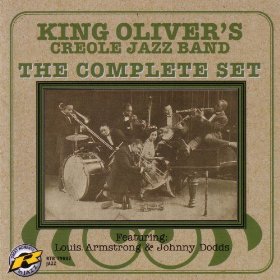
Which jazz albums make up a collection of classics? We shall suggest one each month and gradually build up a list - in no particular order. Do you have these? Do you agree they should be included?
The Essential Album Collection

King Oliver - King Oliver's Creole Jazz Band (1923-1924) - Click here to listen to Dippermouth Blues. Click here to sample the album.
This is the band with early Louis Armstrong, Baby Dodds, Johnny Dodds, Lil Armstrong and others that established the reputation of New Orleans jazz. Click here to read more about King Oliver. Click here to read listener reviews.
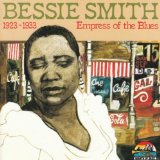
Bessie Smith, 'The Empress Of The Blues'. As one person writes: 'Bessie Smith was, and is, without parallel. She had a huge powerful rich contralto voice that could range from smooth to harsh, she had perfect pitch, and her control was total. The 22 tracks on this CD include Bessie Smith with basic accompaniment of a solitary piano, also with various instruments added such as cornet (e.g. with Louis Armstrong on St Louis Blues) and clarinet, and with jazz ensembles and full jazz orchestration. At all times, and as appropriate to the mood, Bessie Smith brings her sensitive originality to all the blues melodies expressing sadness and meloncholy as well as humour.' Click here to sample the album. Click here to see Bessie in the film St Louis Blues in 1929. Click here to listen to Bessie and Louis Armstrong playing Careless Love Blues in 1925.
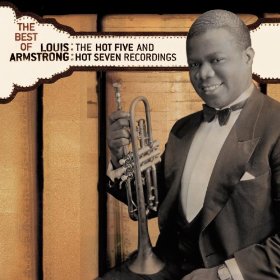 Louis Armstrong - The Hot Fives and Hot Sevens (1925 - 1929)
Louis Armstrong - The Hot Fives and Hot Sevens (1925 - 1929)
It is easy to assume that everyone has recordings by the Hot Five and Hot Seven in their collection. It might be that you have some of the tracks as part of a Louis Armstrong compilation, there are so many compilations available. These recordings were the doorway to jazz with solo improvisation and established the phenomenon that was Louis Armstrong. It is difficult to know which Hot Five / Seven collection to recommend, there are several and reviewers comment on sound quality (these were very early recordings) and lack of consistency in the way tracks are included or ordered sequentially.
The album we have included here is recommended by Cub Koda on allmusic.com who says: ‘This four-CD set brings together all the recordings made during the period of the Hot Five and Hot Sevens along with all the attendant recordings that Armstrong was involved in during this breakthrough period. Although this material has been around the block several times before -- and continues to be available in packages greatly varying in transfer quality -- this is truly the way to go, and certainly the most deluxe packaging this material has ever received with the greatest sound retrieval yet employed. In addition to sounding better than the competition, it also sensibly lays out all the recordings Satchmo made during this period, grouping all the original Hot Five recordings from 1925 to 1927 (and all attendant material) together on the first two discs, all of the Hot Sevens on disc three, with the final disc devoted to the second coming of the Hot Five in 1928 along with the attendant material from the following year. There are also several categories of "bonus tracks" aboard this deluxe set …’. Click here for the CD and mp3 downloads.
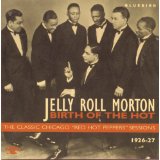
Jelly Roll Morton - The Classic Chicago Red Hot Peppers Sessions - (1926-1927)
The top sessions from the man who claimed to invented the word Jass (Jazz). Jelly Roll indeed was his hottest between 1926-27. These songs are the essence of New Orleans jazz. "Black Bottom Stomp," "Sidewalk Blues," "Dr. Jazz," "The Chant" -- they're all here. Click here to sample the album.
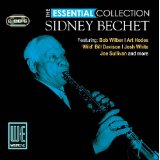
Sidney Bechet -
The Essential Collection. Born in New Orleans, clarinettist and saxophonist Sidney Bechet was one of the great early jazz soloists. His work was recorded before that of Louis Armstrong with whom he later played. Touring Europe in 1919/1920 with Will Marion Cook’s Syncopated Orchestra, Bechet discovered the soprano saxophone when he was in London and much of his famous work is featured on that instrument. There are other albums, some re-mastered, that compile his work, usually under the title of his best-known song, Petite Fleur. This one (Sidney Bechet – The Essential Collection) seems to be a good, economic starting point that includes his playing with trumpeter Tommy Ladnier and other prominent musicians in his life. Click here for details.
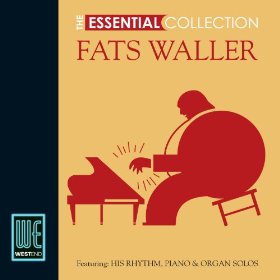 Fats Waller - The Essential Collection
Fats Waller - The Essential Collection
There are a number of collections by the legendary, ebullient piano player. His songs, many written with lyricist Andy Razaf, like Ain’t Misbehavin’ and Honeysuckle Rose have become so well known they are immediately associated with Fats. We have chosen this collection because it is comprehensive. Another collection is criticised because it contains ‘too many instrumental numbers’ and not enough vocals. This collection encompasses both. Speaking of his regular band, trumpeter Herman Autrey and clarinettist Gene Sedric always gave often unacknowledged support.
Click here to sample the album. Click here for a video of Fats Waller singing Ain't Misbehavin' in 1943 from the film Stormy Weather.
 Django Reinhardt, Stephane Grappelli and the Quintette of the Hot Club Of France - There are many albums available by Django Reinhardt and Stephane Grappelli. This 2 CD set covers much of their well-known work with the Quintette of the Hot Club of France with tracks Nuages, Djangology, Rose Room and Sweet Georgia Brown (click here).
Django Reinhardt, Stephane Grappelli and the Quintette of the Hot Club Of France - There are many albums available by Django Reinhardt and Stephane Grappelli. This 2 CD set covers much of their well-known work with the Quintette of the Hot Club of France with tracks Nuages, Djangology, Rose Room and Sweet Georgia Brown (click here).
Their Quintet was one of the earliest continental jazz groups in Europe and popularised what became known as Gypsy Jazz.
Stephane’s violin and Django’s guitar were formidable together. They played together from 1934 to 1939 when they were separated during the war years but came back together for a while in 1946.
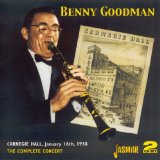 Benny Goodman - Benny Goodman at Carnegie Hall (1938) - First issued in 1950, this was one of the first records of Benny Goodman music issued on an LP. I originally had Sing, Sing, Sing on an EP and had to turn the record over in the middle of Gene Krupa’s classic drum solo. Fortunately, that is no longer an issue. The landmark recording, one of the first to sell over a million copies, was also one of the first concerts to be given by a jazz orchestra in New York’s Carnegie Hall. Click here to listen to Sing, Sing, Sing.
Benny Goodman - Benny Goodman at Carnegie Hall (1938) - First issued in 1950, this was one of the first records of Benny Goodman music issued on an LP. I originally had Sing, Sing, Sing on an EP and had to turn the record over in the middle of Gene Krupa’s classic drum solo. Fortunately, that is no longer an issue. The landmark recording, one of the first to sell over a million copies, was also one of the first concerts to be given by a jazz orchestra in New York’s Carnegie Hall. Click here to listen to Sing, Sing, Sing.
The way Krupa drives this tune is formidable. You think it is all over and then it starts again ... and then at 4.45 minutes Benny Goodman’s solo clarinet introduces the full orchestra fading back to Gene’s drums and Harry James’s trumpet solo. And that’s not the only false ending ... One commentator says: ‘Oh God to have been there and heard this live. No recording with 1930's era equipment could ever do it justice. The sound of the brass and the intensity of Gene Krupa's drumming and the amazing talent of all the soloists all make for an amazing performance.’ (There is a better quality recording but sadly it stops before the end - click here).
Click here to sample all the other tracks from this concert and for more information.
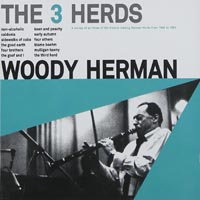
Woody Herman - The 3 Herds. Woody Herman was an American jazz clarinetist and saxophonist and big band leader who led various groups called "The Herd". Herman was one of the most popular of the 1930s and 1940s bandleaders. His bands often played music that was experimental for its time. His music combined the beautiful sound of the leader with the innumerable talents of the group members, both playing and arranging. Many of them went on to become big names in jazz.
This edition compiles the complete original LP The Three Herds (CL592), which was Herman's own selection of some of his hits from the period of 1945 to 1954. Fourteen extra tracks from the same period have been added as a bonus. Includes 20-page booklet. The compilation features Shorty Rogers, Pete Candoli (trumpet), Bill Harris (trombone), Stan Getz, Zoot Sims, Serge Chaloff, Herbie Steward, Flip Phillips, Bill Perkins, John LaPorta (reeds), Jimmy Rowles (piano), Red Norvo (vibraphone), Chuck Wayne, Billy Bauer (guitar), Chubby Jackson (bass), Dave Tough, Buddy Rich, and Don Lamond (drums), among others.
Click here to sample this album which is also available as a download.
Duke Ellington - The Blanton Webster Band - 1940 / 1941. David Stevens recommends this 3 CD collection saying: ' For most of us, I think (although perhaps not the younger generation) any list of Essential Albums must include Louis Armstrong and Duke Ellington. They began their most creative years at about the same time - the first Louis Hot Five recording was in 1925, Duke's first recording of East St Louis Toodle-oo in 1926. But Ellington was still writing new music up to the time of his death in 1974, and this makes it difficult or impossible to select his most "essential" album. However, I think most Ellington aficionados would pick the so-called Blanton/Webster band of 1940 and 1941. The title is a misnomer, as Jimmy Blanton, who created a completely new approach to jazz bass playing, and tenor giant Ben Webster were only two of the ten great soloists in the band during those years, and let's not forget the outstanding contribution of composer/arranger Billy Strayhorn (Gil Evans once said "All I wanted to do was write like Billy Strayhorn")'.
death in 1974, and this makes it difficult or impossible to select his most "essential" album. However, I think most Ellington aficionados would pick the so-called Blanton/Webster band of 1940 and 1941. The title is a misnomer, as Jimmy Blanton, who created a completely new approach to jazz bass playing, and tenor giant Ben Webster were only two of the ten great soloists in the band during those years, and let's not forget the outstanding contribution of composer/arranger Billy Strayhorn (Gil Evans once said "All I wanted to do was write like Billy Strayhorn")'.
'Impossible to list all my favourite tracks, as there are so many of them: Johnny Hodges glorious alto on Never No Lament, Cootie Williams's amazing trumpet on Concerto For Cootie, Webster's classic solo on Cottontail, Tricky Sam Nanton's ferocious trombone on Ko-Ko (a classic, of which I have a 38 page analysis by an eminent musicologist) and the superb Harlem Airshaft and Jack The Bear. Pardon my superlatives, but these performances deserve all that and more'.
[Click here for the 3-CD box set and to sample it click here].
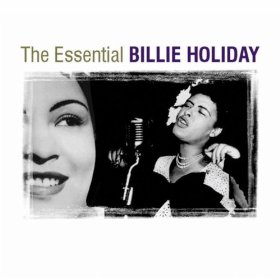 Billie Holiday - The Essential Billie Holiday - Everybody should have music by Billie Holiday in their collection. There are numerous albums by 'Lady Day', so take your pick. The one we feature here The Essential Billie Holiday includes many of her most famous songs with a variety of musicians, but there are also more comprehensive box sets available. Click here for The Essential Billie Holiday where you can sample the album of 60 tracks that include Mean To Me, Lover Man, Miss Brown To You, My Man, God Bless The Child, Fine and Mellow, Yesterdays and Strange Fruit. Billie was raped as a child, worked in a brothel, then moved with her mother to Harlem where she started singing in night clubs. She went on to work with Teddy Wilson, Count Basie, Artie Shaw and others and is considered to be one of the greatest jazz singers of all time. (Click here for more information).
Billie Holiday - The Essential Billie Holiday - Everybody should have music by Billie Holiday in their collection. There are numerous albums by 'Lady Day', so take your pick. The one we feature here The Essential Billie Holiday includes many of her most famous songs with a variety of musicians, but there are also more comprehensive box sets available. Click here for The Essential Billie Holiday where you can sample the album of 60 tracks that include Mean To Me, Lover Man, Miss Brown To You, My Man, God Bless The Child, Fine and Mellow, Yesterdays and Strange Fruit. Billie was raped as a child, worked in a brothel, then moved with her mother to Harlem where she started singing in night clubs. She went on to work with Teddy Wilson, Count Basie, Artie Shaw and others and is considered to be one of the greatest jazz singers of all time. (Click here for more information).
Charlie Parker - The Best Of The Complete Savoy and Dial Recordings. There are many recordings of alto saxophonist Charlie 'Bird' Parker's music but this is a compilation that could be a good place to start as it 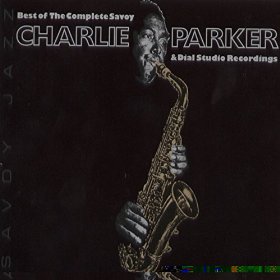 covers some of his masterworks on the Savoy and Dial labels. An alternative might be the album Bird and Diz which pairs Charlie Parker with Dizzy Gillespie. Alto saxophonist Charlie "Bird" Parker (1920–1955), one of the greatest of all jazz soloists, was also one of the founders of bebop. Miles Davis once said, "You can tell the history of jazz in four words: Louis Armstrong. Charlie Parker."
covers some of his masterworks on the Savoy and Dial labels. An alternative might be the album Bird and Diz which pairs Charlie Parker with Dizzy Gillespie. Alto saxophonist Charlie "Bird" Parker (1920–1955), one of the greatest of all jazz soloists, was also one of the founders of bebop. Miles Davis once said, "You can tell the history of jazz in four words: Louis Armstrong. Charlie Parker."
One commentator says of the Savoy / Dial compilation:'These are unquestionably the recordings upon which the Charlie Parker genius and musical legacy must primarily rest, and the listener will not have to wade through dozens of alternate takes and false starts to discover the real Bird. The sound mastering, while distorted on a few tracks (the price of introducing more "presence" into the alto saxophone's sound), is the best I've encountered ... My disappointment at the omission of Donna Lee is compensated for by the inclusion of both Embraceable You (the celebrated version) and Night in Tunisia (but not the concert version with Diz containing the famous 4-bar break).'
Click here to sample the album (These appear to be well-reviewed albums through Amazon, but ask your local record store about alternatives).
 Art Tatum - The Best Of Art Tatum - Art Tatum is acknowledged as being one of the greatest jazz pianists of all time. Almost blind from birth, and having learned to play by ear, his playing was fast, complex, imaginative and inspired.
Art Tatum - The Best Of Art Tatum - Art Tatum is acknowledged as being one of the greatest jazz pianists of all time. Almost blind from birth, and having learned to play by ear, his playing was fast, complex, imaginative and inspired.
His technique has been described as being: ‘… marked by a calm physical demeanor and efficiency. He did not indulge in theatrical physical or facial expression. The effortless gliding of his hands over difficult passages baffled most who witnessed the phenomenon. He especially astonished other pianists to whom Tatum appeared to be playing the impossible.’ To give you an idea, click here for a video of him playing Yesterdays. There are albums of his solo performances and also with others. Click here for The Best Of Art Tatum album where you can also sample the tracks, or click here to sample Volume 1 of his Solo Masterpieces album.
 Art Tatum - The Complete Group Masterpieces
Art Tatum - The Complete Group MasterpiecesAlthough we have included a compilation album by Art Tatum (above) Alan Brown makes a very good case for this collection of recordings. Alan says: 'This album shows the maestro in various small group sessions with the leading musicians who recorded for Verve at the time. I would consider this an essential album for any collection'. Art Tatum is respected as one of the greatest jazz pianists, and he has been a major influence on other musicians. His technical ability, intricate and imaginative playing set a high standard for jazz piano.
The recordings were originally made in 1954 with musicians including Louis Bellson, Red Callender, Benny Carter, Buddy DeFranco, Harry "Sweets" Edison, Roy Eldridge, Lionel Hampton, Jo Jones, Barney Kessel, Buddy Rich, Alvin Stoller and Ben Webster. It is available as an import from Amazon as an 8 CD package for the amazing price of £18.80 (click here) or you can download it in mp3 format for £10.98 (click here where you can also sample the recording). One reviewer of the set agrees with Alan saying: 'These 1950s sessions show that Tatum could play well in a group and was not just the ultimate jazz piano soloist. All these sessions are good, and those with a piano trio propelled by the great Jo Jones and with Benny Carter are very good. The best is kept until last. Volume 8, with Ben Webster, is one of the great jazz recordings - the two soloists fit together wonderfully to produce a series of marvellous interpretations of some of the great standards'
 The Buck Clayton Jam Sessions
The Buck Clayton Jam Sessions Roger Strong recommended these recordings in May 2014 saying: 'It struck me looking through the list of Essential Albums that there was no real mainstream recording there and I think as a representative record its hard to go past the Buck Clayton Jam Sessions. I recall that my brother bought the LP that had Huckle Buck on one side and Robbin's Nest on the other and we just about wore the disc out. Even now I seem to discover something new when I play it. Since then of course I have collected most of the tracks. I am always amused at the contrast that Lem Davis provided on alto sax. The Solar 3 Disc set looks to be the best of those around at the moment so that would have to be the pick of them.
Click here for the 3 CD box set recommended by Roger and you will also find a lot more detail about the recordings on that page. You can also sample the recordings if you click here.
 Sarah Vaughan (Sarah Vaughan with Clifford Brown) - Sarah Vaughan - 1954
Sarah Vaughan (Sarah Vaughan with Clifford Brown) - Sarah Vaughan - 1954 What do people say of this album?:
‘This 2003 release of Vaughan's December, 1954, album (previously released in 1991 as "Sarah Vaughan with Clifford Brown") is one of her most brilliant collaborations and a fine memorial to the work of Brown, who died eighteen months after recording this, at age twenty-six. With Brown on trumpet, Paul Quinichette on tenor sax, Jimmy Jones on piano, Roy Haynes on drums, and Herbie Mann on jazz flute, the album is a sophisticated partnership among musicians, all of whom are thinking of the whole sound and the whole effect, rather than their own star turns. The mood varies from light to poignantly tender, the tempo is usually slow, and the volume is kept low, highlighting the creativity of each performer's variations while remaining true.’
‘From the very opening bars of Lullaby of Birdland, the sweet interplay of Vaughan's velvet voice and Brownie's mellifluous trumpet make this recording truly wonderful. Brownie took a break from the illustrious Max Roach Quintet to play with Vaughan and a band put together for the date.
It exudes the aura of great occasions - collective confidence, fluid ideas and the chemistry of a fresh association.’
Click here to sample the album

Horace Silver - Horace Silver and the Jazz Messengers - 1955. This album on the Blue Note label put pianist Horace Silver and drummer Art Blakey together playing bebop, blues and gospel including the classic tracks The Preacher and Doodlin'. Someone says: 'At one time this was the album most frequently cited in the college jazz history and jazz appreciation texts as the essential introduction to, if not example of, the so-called "hard-bop" movement. It's still easy to recommend - especially to students of the music, those who are curious about its history and to musicians. Moreover, the tunes have become standards, with some of them put to words by vocalese lyricists like Jon Hendricks. Above all, every aspiring musician will want to learn "The Preacher" (based on "Show Me the Way to Go Home" chords and performed these days even by traditional, "dixieland" bands).
Click here to listen to Doodlin'
Later, the Messengers would split up into Art Blakey's Jazz Messengers and The Horace Silver Quintet. Wikipedia affirms :'It was an important album in the establishment of the hard bop style, and was the studio first album released under the band name The Jazz Messengers, which Blakey would use for the rest of his career. Scott Yanow on Allmusic describes it as "a true classic".
Click here to sample the album.
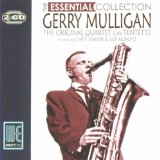
The legendary baritone sax player of the cool West Coast, this two-album collection includes the key recordings with his historic Quartet as well as sessions with Chet Baker and Lee Konitz, Larry Bunker, Chico Hamilton and Bud Shank featured in a Birth of the Cool style tentette. Tunes include Bernie's Tune, Walkin Shoes, Bark For Barksdale, My Funny Valentine, Jeru and many more. Click here to sample.
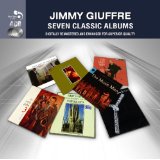
Jimmy Giuffre - The American clarinettist and saxophonist was at the forefront of West Coast Jazz in the 1950s. His recordings with his Trio in that decade are some of the best known examples of his work. The first Trio included guitarist Jim Hall and bass player Ralph Pena. When Atlas left, his place was taken by trombonist Bob Brookmeyer. Other Trio members came and went in the years that followed including Steve Swallow, Buddy Clark and Paul Bley.
This compilation album features 7 Giuffre albums at a very reasonable price and is a good introduction to the reeds player. The albums included are Jimmy Giuffre 3, The Music Man, Travlin' Light, Western Suite, The Easy Way, Fusion and Thesis. Click here for details.
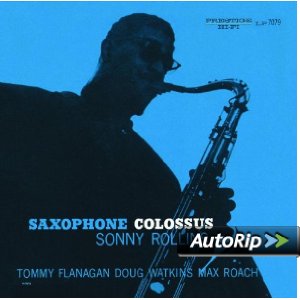 Sonny Rollins - Saxophone Colossus - (1956)
Sonny Rollins - Saxophone Colossus - (1956)
Considered to be a masterpiece, this album sees an inspired Sonny Rollins with a quartet where everything seems to come together. The line-up is Sonny Rollins (tenor sax), Tommy Flanagan (piano), Doug Watkins (bass) and Max Roach (drums). Recorded at Hackensack in 1956, the album contains just five numbers – St. Thomas, You Don’t Know What Love Is, Strode Road, Moritat and Blue 7. Born in New York in 1930, Sonny Rollins started as a pianist before changing to saxophone at the age of 13. At high school he played with Jackie McLean, Kenny Drew and Art Taylor and made his first recording when he was nineteen. By 1954, he played with Miles Davis, Charlie Parker and Thelonius Monk. Click here for more information. Click here to sample the album.
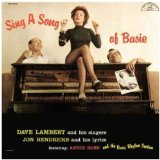 Lambert, Hendricks and Ross - Sing A Song Of Basie - (1956)
Lambert, Hendricks and Ross - Sing A Song Of Basie - (1956)
Mike Whitaker recommended this album in July 2014 arguing:
'First - nobody has yet nominated a Basie album. I'm sure someone will suggest The Atomic Mr Basie any day now, but I'm not going to.'
'Second - vocalese is a minor but exciting sub-genre of vocal jazz. It contains elements of the close-harmony singing of all those swing-era Sisters (Clark, Boswell, Andrews), the multi-tracking developed by Les Paul & Mrs, the clever stuff done by the Hi-Los and King Sisters (and continued by Singers Unlimited) ... andlet's not forget the magnificent Manhatten Transfer. But Lambert, Hendricks and Ross did it first - the swing, the wit and the skill of the words, driven along by Nat Pierce, Eddie Jones and Sonny Payne. Come on - how can any jazz collector NOT regard it as an essential?'
Click here to listen to Everyday from the album. Click here to sample the album and to read other comments about it.
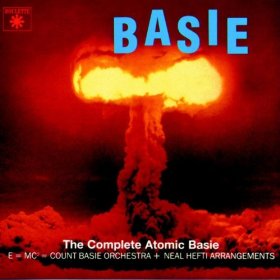 Count Basie - The Complete Atomic Basie - (1957)
Count Basie - The Complete Atomic Basie - (1957)
Vic Arnold recommends this album saying: 'The album is actually called The Complete Atomic Basie: E= MC2 = Count Basie Orchestra + Neal Hefti Arrangements. This was the first Count Basie recording that I purchased, in 1958, and it has, in my opinion never been beaten . Basie's recordings in the 1930's and 40's were labelled as being by his 'old testament' band. When he reformed his big band, his recordings were classed as 'second testament' or 'new testament' bands. This great recording is the best of the lot. It starts off with The Kid From Red Bank and Basie's piano is to the fore. The remaining 10 tracks all vary, from the magical sounding Flight of the Foo Birds, to Fantail and Whirly-Bird to the slow Li'L Darlin'.'
'There are lots of opportunities for great reed and brass solo's and Eddie "Lockjaw" Davis on tenor sax provides plenty of excitement. It is recorded in glorious Mono, and the cover of the album still looks awe-inspiring after 56 years! The CD that I have has 5 bonus tracks that were all arranged by Jimmy Mundy, all recorded in October 1957.'
Click here to listen to the complete album.

Charles Mingus - Mingus Ah Um (1959) - Click here to listen to the album
Click here to read about the album. It includes Good Bye Pork Pie Hat, the famous tribute to Lester Young who died just before the album was recorded. Mingus Ah Um was one of fifty recordings chosen by the Library of Congress to be added to the American National Recording Registry in 2003. Click here for listener reviews.
 Miles Davis - Kind Of Blue (1959) - Claimed by some to be not only Miles Davis’s best selling album, but the best selling jazz album of all time. Certainly influential, the sessions, recorded in March and April 1959 at Columbia’s Studio on New York City, featured Bill Evans (piano), Jimmy Cobb (drums), Paul Chambers (bass), and saxophonists John Coltrane and Cannonball Adderley and moved the music from hard bop into modal jazz.
Miles Davis - Kind Of Blue (1959) - Claimed by some to be not only Miles Davis’s best selling album, but the best selling jazz album of all time. Certainly influential, the sessions, recorded in March and April 1959 at Columbia’s Studio on New York City, featured Bill Evans (piano), Jimmy Cobb (drums), Paul Chambers (bass), and saxophonists John Coltrane and Cannonball Adderley and moved the music from hard bop into modal jazz.
The album features the classic tunes So What, Freddie Freeloader, All Blues and Flamenco Sketches. Click here for introductory video.Click here for more information.

Ornette Coleman - The Shape Of Jazz to Come - (1959) Suggested by Steve Day who says: - Ornette Coleman is for me the player who tore up the rules and refused to write new ones. On ‘The Shape’: Ornette’s Coleman’s alto saxophone extemporising the beautiful melody of Lonely Woman in one long linear narrative improvisation without chords is all poise yet as angular as Picasso’s painting of Dora Maar. All the harmonies coming off Don Cherry’s pocket cornet and Charlie Haden’s mercurial bass are improvised. They are set only for that moment. Next time they could be, and were, quite different. And Billy Higgins, a drummer of detail (soon to become ‘house drummer’ at Blue Note Records), so different in his spatial awareness to Elvin Jones. Higgins hitting a kit, dividing the rhythm like a pianist playing pans. ‘The Shape' was near the beginning for Ornette, what followed for him was one of the great odyssey journeys of American music.
This third album by saxophonist Ornette Coleman and his quartet came out on Atlantic Records in 1959, a year in which many jazz classic recordings emerged. Recorded at Radio Recorders in Hollywood, each piece contains a brief melody followed by free improvisation, abandoning the use of chord structures. The album has been described as breakthrough in helping to establish the free jazz movement. Click here to sample the album and for more information. Click here to listen to the album.
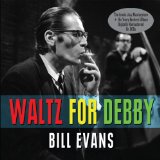 Bill Evans - Waltz For Debby - (1961)
Bill Evans - Waltz For Debby - (1961)
The following description sums up the album well: 'When pianist Bill Evans died at the age of 51 in 1980, he had established a different approach to tackling the art of jazz piano. His view on improvisation encompassed a whole new outlook with regard to keyboard exploration, constantly rejecting the ugly or the inappropriate, always seeking the perfect and profound, encompassing great subtlety, sophistication, taste and reflection. His group featuring Scott LaFaro and Paul Motian was regarded as one of the most potent forces of its day; the line-up's final recording being 'Waltz For Debby', a disc emanating from a stay at New York's Village Vanguard in June 1961.' Others have said: 'This album is widely considered to be one of the best in the Evans canon, and the type of emotive interplay between the musicians that at some points seemed almost deconstructed has served as a model for piano trio play ... LaFaro died in a car accident just ten days after the live date at the Village Vanguard from which Waltz for Debby and its predecessor, Sunday At The Village Vanguard were taken. The loss of LaFaro hit Evans hard, and he went into a brief seclusion. When Evans returned to the trio format later in 1962, it was with Motian and noted bassist Chuck Israels.'
As well as the title track, the album included many jazz standards like My Foolish Heart, My Romance, The Way You Look Tonight, The Man I Love and I Got Rhythm. Click here for a video of Bill Evans playing Waltz For Debby. Click here to sample Waltz For Debby.

John Coltrane - A Love Supreme - (1964). Suggested by Steve Day who says: This is where music took my ears and made everything else an altered place. Coltrane changed everything to do with the tenor saxophone. No one can now approach the instrument without having to figure John Coltrane. Back in 1965 when A Love Supreme was released there was already Coleman Hawkins, Stan Getz, Sonny Rollins, plus all those great Basie and Ellington guys. Dance bands and Be-bop had enabled the saxophone to become a horn of plenty; tenor sax was thick on the ground. Coltrane had already done time in a variety of bands, and the big gigs with Miles Davis, Thelonious Monk were behind him, as was the big master stroke of Giant Steps on Atlantic records. But no one before him, or among his peers, or subsequently, has touched technique, power, pulse and spirit as Coltrane did on A Love Supreme; and by ‘spirit’, I mean what it is to elucidate the human condition. A Love Supreme breaks form; so we have four parts stretched out by not only Coltrane’s horn but by Elvin Jones’ drums spreading metre and beat like the long word Philadelphia, taking it to abstraction. Phil-a-del-phi-a is where Coltrane grew up as a kid. And McCoy Tyner’s piano is a mantra’s map with Jimmy Garrison’s bass holding, holding deep down the emphatic gravitas of this wonderful music. I was a young man when I first heard A Love Supreme. It changed everything I have subsequently ever heard.
A four-part suite, the album is a spiritual composition and has been ranked by Rolling Stone magazine as number 47 in its list of the 500 greatest albums of all time. The manuscript for the album is one of the National Museum of American History's "Treasures of American History." Click here to listen to A Love Supreme. Click here for more information.
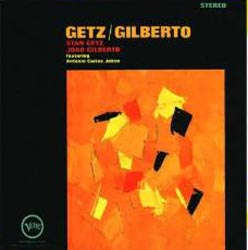
Stan Getz and João Gilberto - Getz / Gilberto - This 1964 album brought together saxophonist Stan Getz, Brazilian guitarist João Gilberto, and Composer and pianist Antonio Carlos Jobim in a recording that started a bossa nova craze in the United States and internationally. Stan Getz had already played bossa nova on his album Jazz Samba. Getz / Gilberto became one of the best-selling jazz albums of all time, and turned Astrud Gilberto, who sang on the tracks The Girl From Ipanema and Corcovado into a star.
The album won the 1965 Grammy Award for Best Album of the Year, Best Jazz Instrumental Album - Individual or Group and Best Engineered Album, Non-Classical. "The Girl from Ipanema" also won the award fo Record of the Year in 1965. This was the first time a jazz album received Album of the Year. It was also the last jazz album to win the award until Herbie Hancock's River.The Joni Letters 43 years later, in 2008.
Click here to sample the album. Click here for a video of Astrud Gilberto and Stan Getz performing The Girl From Ipenema in 1964.
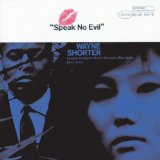
Wayne Shorter – Speak No Evil - (1964) - This was saxophonist Wayne Shorter’s sixth album. He had onboard Coltrane’s drummer, Elvin Jones, Herbie Hancock and Ron Carter from Miles Davis’s band and Freddie Hubbard from Shorter’s days with Art Blakey.
The album was hard bop based with modal elements and Shorter said that in writing the material for this album he was "thinking of misty landscapes with wild flowers and strange, dimly-seen shapes — the kind of place where folklore and legends are born. And then I was thinking of things like witch burnings too."
The tracks included Dance Cadaverous, Witch Hunt and Fee-Fi-Fo-Fum as well as the classic Infant Eyes and Wild Flower. The cover shows Wayne Shorter's first wife, Teruka (Irene) Nakagami, whom he met in 1961.
Click here to listen to Infant Eyes.
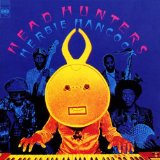
Herbie Hancock – Headhunters - (1973) - Head Hunters was Herbie Hancock's twelth album and is a key recording in the introduction of Jazz Funk. In 2007, the Library of Congress added it to the National Recording Registry, which collects "culturally, historically or aesthetically important" sound recordings from the 20th century.
Fred Goodman says: 'Head Hunters was something different: a stripped-down date featuring reedman Bennie Maupin as the only horn player, and a funk-oriented rhythm section made up of Paul Jackson, Harvey Mason, and Bill Summers. Hancock traded in his sophisticated piano performances and complex compositions for simple melodies, slow-burn funk grooves, and light electric keyboard splashes. The results, particularly on the tracks Chameleon and Watermelon Man, had a profound impact on other musicians, although critics charged Hancock with playing to the galleries. But the album has stood the test of time - something neither the wealth of Hancock's imitators nor his own subsequent albums in this vein have been able to do.'
Click here to listen to the album.
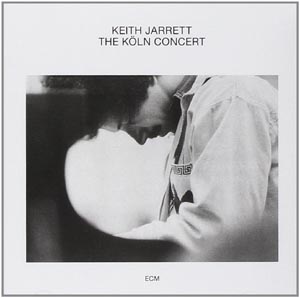 Keith Jarrett - The Köln Concert - (1975) - The Köln Concert is a concert recording of solo piano improvisations by the pianist Keith Jarrett performed at the Opera House in Cologne on January 24, 1975. It was released on the ECM label to critical acclaim, and went on to become the best-selling solo album in jazz history.
The concert was organized by 17-year-old Vera Brandes, then Germany’s youngest concert promoter. At Jarrett's request, Brandes had selected a Bösendorfer 290 Imperial concert grand piano for the performance. However, there was some confusion by the opera house staff and instead they found another Bösendorfer piano backstage – a much smaller baby grand – and, assuming it was the one requested, placed it on the stage. Unfortunately, the error was discovered too late - the piano they had was intended for rehearsals only and was in poor condition and required several hours of tuning and adjusting to make it playable. Jarrett often used ostinatos and rolling left-hand rhythmic figures during his Köln performance to give the effect of stronger bass notes, and concentrated his playing in the middle portion of the keyboard.
Keith Jarrett - The Köln Concert - (1975) - The Köln Concert is a concert recording of solo piano improvisations by the pianist Keith Jarrett performed at the Opera House in Cologne on January 24, 1975. It was released on the ECM label to critical acclaim, and went on to become the best-selling solo album in jazz history.
The concert was organized by 17-year-old Vera Brandes, then Germany’s youngest concert promoter. At Jarrett's request, Brandes had selected a Bösendorfer 290 Imperial concert grand piano for the performance. However, there was some confusion by the opera house staff and instead they found another Bösendorfer piano backstage – a much smaller baby grand – and, assuming it was the one requested, placed it on the stage. Unfortunately, the error was discovered too late - the piano they had was intended for rehearsals only and was in poor condition and required several hours of tuning and adjusting to make it playable. Jarrett often used ostinatos and rolling left-hand rhythmic figures during his Köln performance to give the effect of stronger bass notes, and concentrated his playing in the middle portion of the keyboard.
Jarrett arrived at the opera house late in the afternoon and tired, he had not slept well in several nights and was in pain from back problems and had to wear a brace. The concert took place at the unusually late hour of 23:30, following an earlier opera performance. The show was completely sold out and the venue was filled to capacity despite the obstacles, Jarrett's performance was enthusiastically received by the audience and the subsequent recording was acclaimed by critics. It remains his most popular recording and continues to sell well, decades after its initial release.
Click here to listen to the concert. Click here for the album.
© Sandy Brown Jazz 2013 - 2015